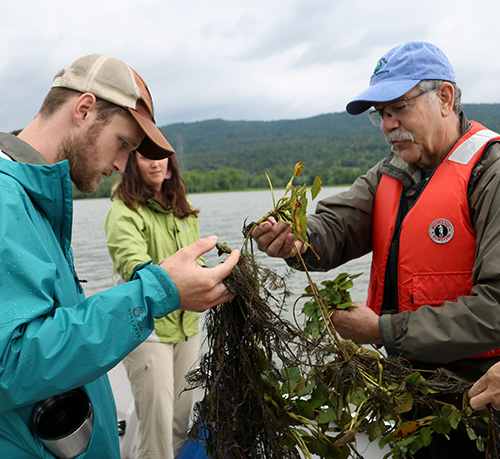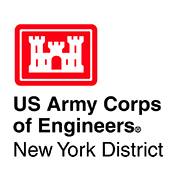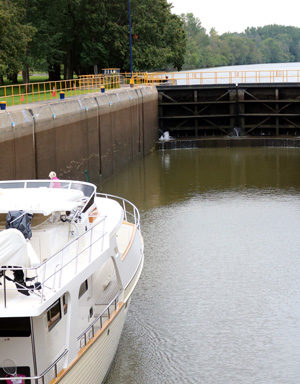
U.S. Army Corps of Engineers
Mission
The U.S. Army Corps of Engineers (USACE) offers a variety of planning, design, and implementation capabilities aimed at improving water quality, restoring ecosystems, and more in the Lake Champlain watershed. USACE services are made available through several assistance programs that support the needs of non-federal partners.
Agency Initiatives
Watershed Environmental Assistance
The USACE works in partnership with the LCBP to implement the Watershed Environmental Assistance Program under Section 542 of the Water Resources Development Act of 2000. The goal of the program is to provide assistance with planning, designing and implementing large scale projects that protect and enhance water quality, water supply, ecosystem integrity and other water related issues within the watershed. The LCBP coordinates the solicitation and review of requests for support from qualifying organizations. The USACE selects projects for implementation, considering the recommendations of the LCBP’s Technical Advisory Committee, and provides planning and technical services and project coordination. A current project with NEIWPCC is assessing alternatives to prevent the interbasin transfer of aquatic invasive species between the Hudson and Champlain drainages in the Champlain Canal.
Learn more about the Watershed Environmental Assistance Program
Invasive Plant Control

USACE works with state and other federal agencies to control aquatic invasive species that can impair navigation, recreation, and habitat. Invasive plants cost the nation an estimated $250 billion annually. The Aquatic Plant Control Research Program uses the best available science to provide recommendations for effective and economically efficient methods for controlling invasive species. This research helps managers address threats to the Lake ecosystem. The critical funding provided through the program has helped to support successful efforts to control water chestnut in Lake Champlain. This floating invasive plant forms dense leafy mats that impede boat traffic, crowd out native plants, and reduce oxygen available to fish and other aquatic organisms. Mechanical and hand harvesting of water chestnut has helped to reduce substantially the extent of the plant’s infestation in the South Lake over the last twenty years.
Current Projects
Lake Champlain Canal Study
The purpose of the Lake Champlain Canal Study is to design a hydrologic separation barrier that would prevent the inter-basin transfer of aquatic invasive species between the Hudson and Champlain drainages within the Champlain Canal, including identifying a recommended location for a barrier. The team is preparing a background and existing conditions report for the canal, an alternatives analysis, and a series of first preliminary and then more detailed design alternatives for the proposed hydrologic separation barrier.
Aquatic Invasive Plant Control Program, VT
This long-standing program which began in 1983 is a success story in the reduction of water chestnut infestation in the South Lake. Hand and mechanical pulling, research, surveys, public outreach and education are all tools used to adaptively manage and reduce aquatic invasive species who can wreak havoc on navigability in the lake.

